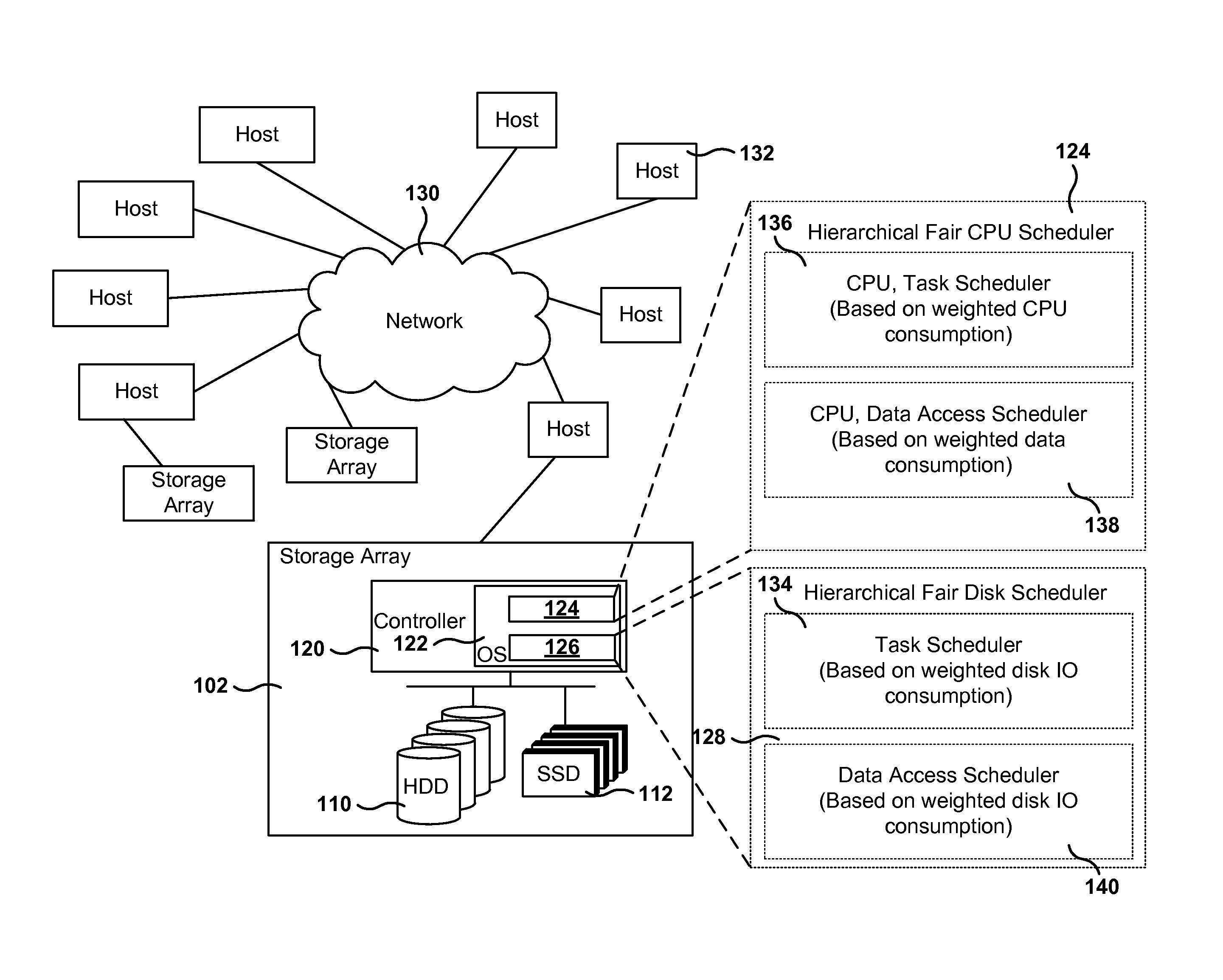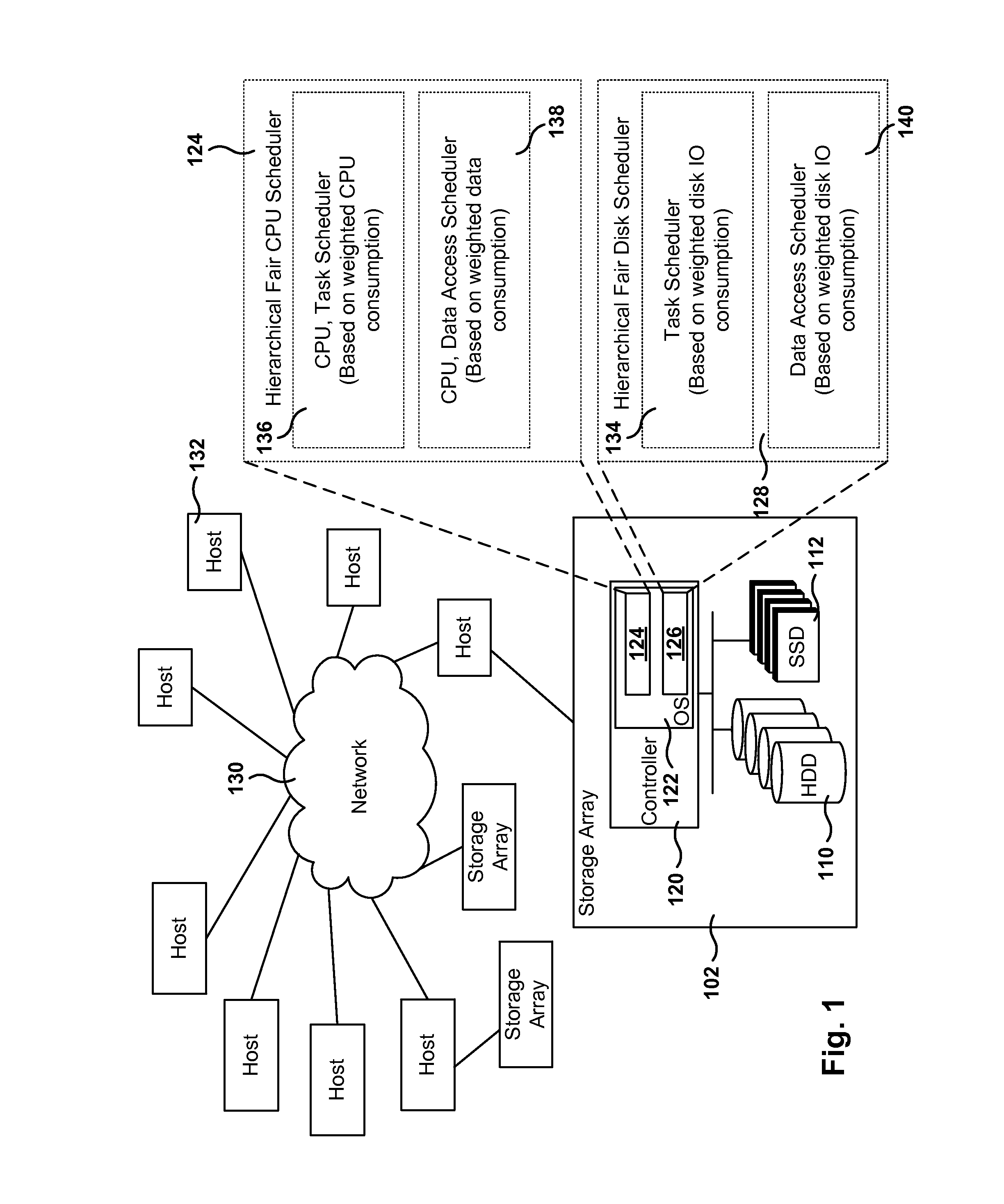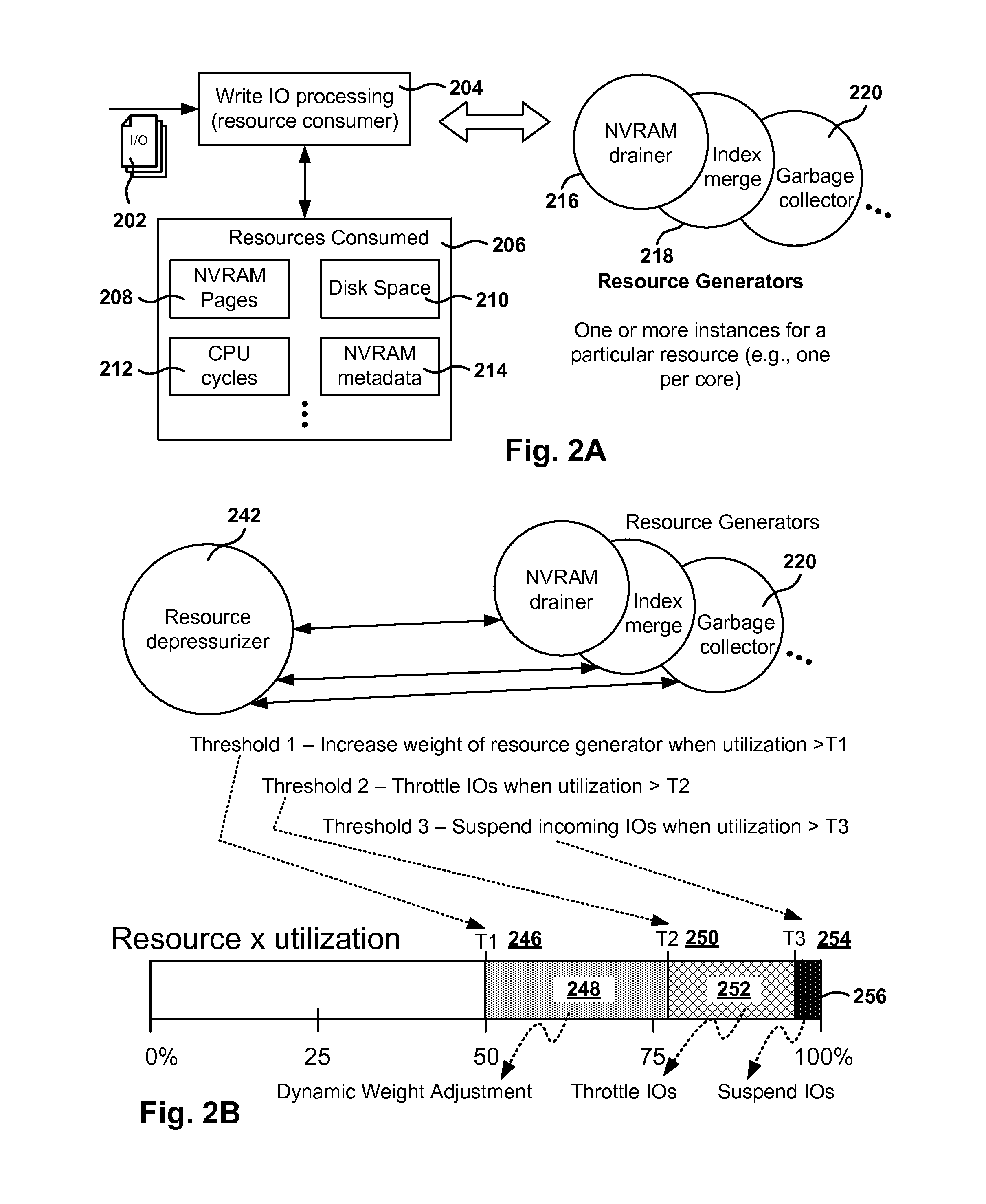Congestion avoidance in network storage device using dynamic weights
dynamic weight technology, applied in the direction of program control, multi-programming arrangements, instruments, etc., can solve the problems of affecting the performance and reliability of a network storage device, degrading read and write io performance, and inefficient background operations, so as to increase and reduce the resource utilization of resources
- Summary
- Abstract
- Description
- Claims
- Application Information
AI Technical Summary
Benefits of technology
Problems solved by technology
Method used
Image
Examples
Embodiment Construction
[0028]The following embodiments describe methods, devices, systems, and computer programs for allocating CPU cycles and disk IOs to resource-creating processes based on dynamic resource allocations, which are implement using dynamic weights, which change according to the current percentage of resource utilization in the storage device. It is in this context that embodiments arise.
[0029]As the system processes incoming Input / Output (IO) requests, the consumption of resources (e.g., NVRAM—Non-Volatile Random Access Memory—data pages, disk space) increases. Background tasks, also referred to herein as resource generators (e.g. NVRAM drainer, Garbage Collector, Index merge, etc.), process these consumed resources and release them back to the pool to decrease the resource utilization level. However, background tasks need CPU cycles and disk IOs to release these resources. But sometimes a constant flow of incoming IOs puts strain on the system, and the background tasks that release resour...
PUM
 Login to View More
Login to View More Abstract
Description
Claims
Application Information
 Login to View More
Login to View More - R&D
- Intellectual Property
- Life Sciences
- Materials
- Tech Scout
- Unparalleled Data Quality
- Higher Quality Content
- 60% Fewer Hallucinations
Browse by: Latest US Patents, China's latest patents, Technical Efficacy Thesaurus, Application Domain, Technology Topic, Popular Technical Reports.
© 2025 PatSnap. All rights reserved.Legal|Privacy policy|Modern Slavery Act Transparency Statement|Sitemap|About US| Contact US: help@patsnap.com



